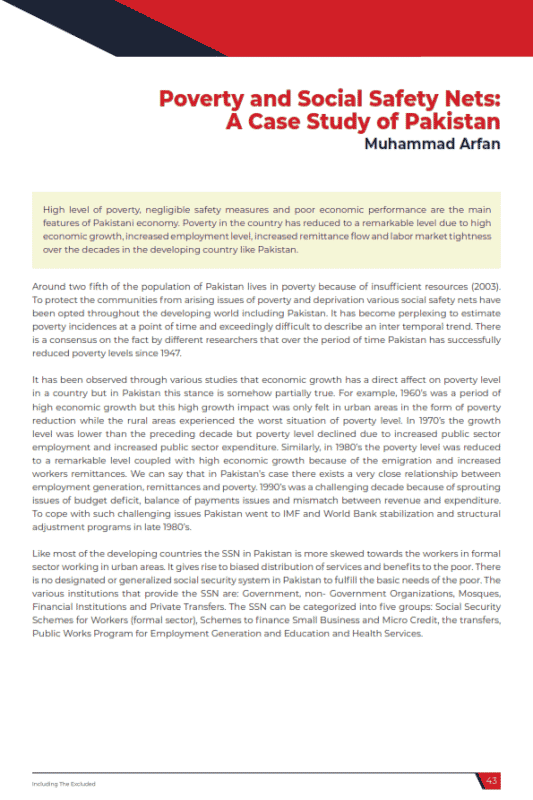
Pakistan Institute of Development Economics
- Home
Our Portals
MenuMenuMenuMenuMenuMenuMenu - ResearchMenuMenuMenuMenuMenuMenuMenu
- Discourse
- The PDR
- Our Researchers
- Academics
- Degree Verification
- Thesis Portal
- Our Portals
Poverty and Social Safety Nets: A Case Study of Pakistan (P & R Vol.2 Issue 4)
Around two fifth of the population of Pakistan lives in poverty because of insufficient resources (2003). To protect the communities from arising issues of poverty and deprivation various social safety nets have been opted throughout the developing world including Pakistan. It has become perplexing to estimate poverty incidences at a point of time and exceedingly difficult to describe an inter temporal trend. There is a consensus on the fact by different researchers that over the period of time Pakistan has successfully reduced poverty levels since 1947. It has been observed through various studies that economic growth has a direct affect on poverty level in a country but in Pakistan this stance is somehow partially true. For example, 1960’s was a period of high economic growth but this high growth impact was only felt in urban areas in the form of poverty reduction while the rural areas experienced the worst situation of poverty level. In 1970’s the growth level was lower than the preceding decade but poverty level declined due to increased public sector employment and increased public sector expenditure. Similarly, in 1980’s the poverty level was reduced to a remarkable level coupled with high economic growth because of the emigration and increased workers remittances. We can say that in Pakistan’s case there exists a very close relationship between employment generation, remittances and poverty. 1990’s was a challenging decade because of sprouting issues of budget deficit, balance of payments issues and mismatch between revenue and expenditure. To cope with such challenging issues Pakistan went to IMF and World Bank stabilization and structural adjustment programs in late 1980’s.



